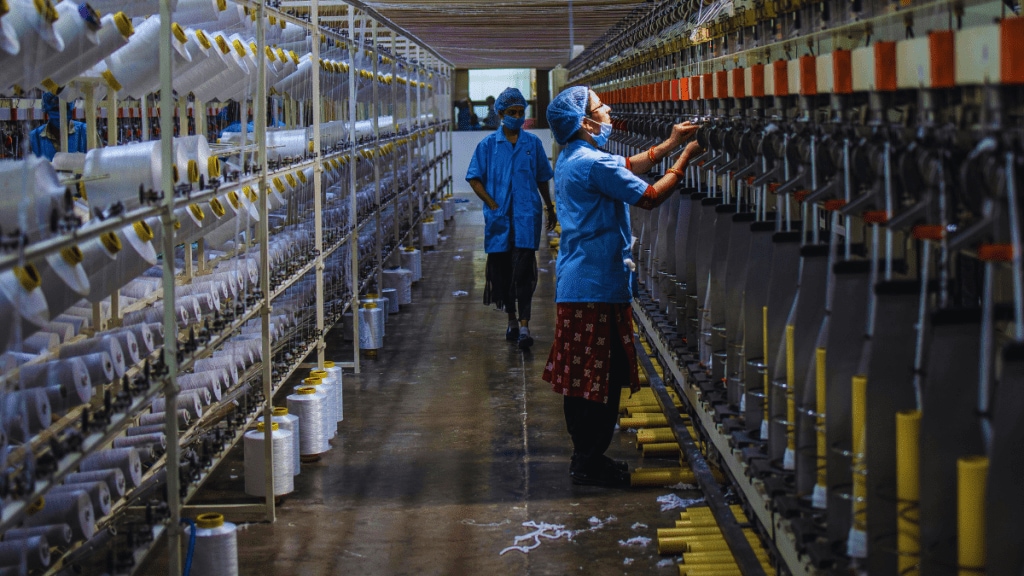The United States’ decision to impose a 25% tariff and penalty on Indian imports is set to severely dent India’s textile and apparel exports, with manufacturers warning of below-cost sales and potential mass layoffs in the country’s second-largest employment-generating sector.
India’s $37-billion textile and apparel export industry now finds itself at a pricing disadvantage vis-a-vis competitors like Bangladesh, Vietnam, and Indonesia—countries that face significantly lower duties.
“We are on a very sticky wicket now. The situation is going to be pretty bad for Indian exporters,” said Sudhir Sekhri, Chairman of the Apparel Export Promotion Council (AEPC). “Exporters now have their back against the wall and will be forced to sell below cost just to keep factories running and avoid mass layoffs.”
India is the world’s sixth-largest exporter of textiles and apparel, with exports worth $36.6 billion in FY25. The sector employs over 45 million people directly, making it the second-largest source of employment in the country. Nearly 80% of production is concentrated in Micro, Small and Medium Enterprises (MSME) clusters.
New barriers
In FY25, India exported $10.7 billion worth of textiles and apparel to the US, accounting for 29% of total sector exports. The country had hoped to expand its market share in the US—the world’s largest apparel market—from 6%, but that ambition is now at risk.
Under the final tariff structure, Bangladesh, Vietnam, and Sri Lanka will face 20% duties, while Cambodia will see 19%. “India already faces an average 5% tariff disadvantage against these countries, with China being the only major exporter over which we currently hold a tariff edge,” said Prabhu Dhamodharan, convenor of the Coimbatore-based Indian Texpreneurs Federation (ITF).
China was excluded from Friday’s announcement as it is currently in negotiations with the US. A 90-day tariff truce between the two countries ends on August 12, after which China could face an additional 30% duty if talks fail.
The US is a critical market for Indian ready-made garments (RMG), accounting for 33% of total garment exports in 2024. India’s share of US RMG imports rose from 4.5% in 2020 to 6% in 2024, making it the fourth-largest exporter to the US, behind China (21.9%), Vietnam, and Bangladesh. Together, these three nations supplied 49% of US apparel imports in 2024.
Industry urges swift policy moves
Dhamodharan said the government and industry should work together to protect the hard-earned gains made in the US market over the past three years. AEPC’s Sekhri said the industry will meet with government officials next week to explore ways to cushion the blow from the tariffs.
Siddhartha Rajagopal, Executive Director of the Cotton Textiles Export Promotion Council (TEXPROCIL), said the imposed tariffs may not be final and expressed hope that ongoing negotiations would help lower them. “It’s definitely a short-term setback. But to mitigate the impact and reduce overdependence on the US market, India must accelerate its free trade agreements (FTAs) with the EU and Canada,” he said.
While India has recently signed a landmark FTA with the UK, industry players say that it will take time to implement and translate into new orders. “It’s at least four months away. But we’re in the middle of peak buying season—buyers are now placing Spring-Summer 2026 orders for delivery from December 2025. This is when most of our biggest season’s orders come in,” Sekhri said.
He also warned that once buyers shift to new sourcing geographies, it is difficult to bring them back. “It doesn’t mean orders will stop coming to India, but the terms will become harsher and profit margins will be wiped out,” Sekhri added.

